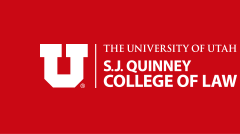Author ORCID Identifier
Document Type
Article
Publication Date
2022
Abstract
In 2007, eleven major U.S. research universities and the Association of American Medical Colleges signed an accord titled “In the Public Interest: Nine Points to Consider in Licensing University Technology.” It outlined a range of issues that universities should consider when licensing their technology to the private sector - from reservations of rights and limitations on exclusivity to refraining from dealing with patent assertion entities to making medical technologies accessible at affordable prices. More than talking points, the document proposed specific contractual clauses intended to promote the educational and public welfare missions of universities. Today, more than one hundred academic institutions and associations around the world have signed the Nine Points document. Yet in the fourteen years since the document was created, there has been no systematic, empirical assessment of its effect on university licensing practices. This article fills that gap with the first empirical study of the effect of the Nine Points document on university licensing practices. Through a review of 220 publicly available university patent licenses signed both before and after the adoption of the Nine Points document, this article finds that while the document prompted the expansion of educational and non-profit research using patented university technology, it resulted in few changes relating to the promotion of public health or access to medical technologies. This mixed adoption of the recommendations made by the Nine Points document suggests that there is little consensus regarding the nature of the public interest that the Nine Points document sought to promote. To address the renewed public focus on public health brought about by the Covid-19 pandemic, this article suggests that a reorientation of university technology transfer policy may be in order – one that could be facilitated through greater engagement of academic faculty, senior administrators, students, alumni and other institutional stakeholders in setting policy for university technology transfer.
Recommended Citation
Contreras, Jorge L., "'In the Public Interest' - University Technology Transfer and the Nine Points Document – An Empirical Assessment" (2022). Utah Law Faculty Scholarship. 339.
https://dc.law.utah.edu/scholarship/339

